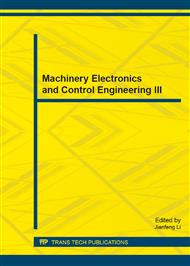p.448
p.452
p.456
p.461
p.465
p.470
p.476
p.480
p.484
Marine Engine Simulation System for Crew Operation Examination Based on Virtual Reality
Abstract:
Aiming at the present deficiency of operation examination for marine engine, a simulation system of marine engine based on virtual reality is developed. In this paper, the virtual scene and 3D entity model of marine engine is constructed by 3DS MAX according to the actual situation of engine room and the specific operation requirements, and then the 3D model is driven by DirectX in the environment of Visual C++6.0 to achieve the functions of VR scene roaming, human-computer interaction and operation examination. The VR simulation system developed as a part of the whole marine engine simulator can supply an almost real environment for the crew operation examination, which will greatly improve the operation ability of crew, being of important significance for the reform of crew examination in China.
Info:
Periodical:
Pages:
465-469
Citation:
Online since:
December 2013
Authors:
Price:
Сopyright:
© 2014 Trans Tech Publications Ltd. All Rights Reserved
Share:
Citation:


